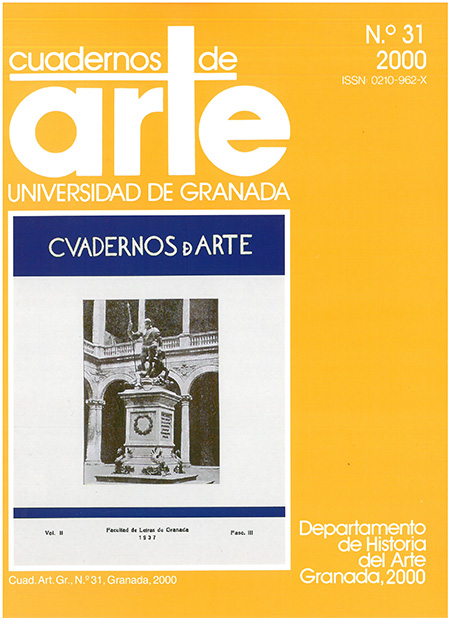Utopía and an interesting sketch from the end of the 16th century: the sketches for a high altarpiece and ironwork screen in a Sevillian convent.
Keywords:
Renaissance altarpieces, Mannerist screens, Convent of the Gracious St. Mary (Seville), Maeda, Asensio deAbstract
Despite the importance which altarpiece architecture had in Sevillian artistic life in the 16th and 17th centuries, little evidence remains of the sketches and plans for these religious pieces. This makes the sketches which were made between 1585 and 1593 for the high altar of the convent of the Gracious St. Mary, which no longer exists, ali the more significan!. The altarpiece is characterized by the Romanistic preferences of the artists of the time, while the screen is in the mannerist style. Neither of these projects was in fact carried out, although they were of interest to such artists as Francisco Pacheco, Juan Martínez Montañés, Juan de Oviedo, Andrés de Ocampo, Diego López Bueno and others. These studies may have been kept in the care of the grand master of Cathedral works in Granada, Asensio de Maeda.Downloads
Downloads
Published
2000-11-01
How to Cite
Herrera García, F. J. (2000). Utopía and an interesting sketch from the end of the 16th century: the sketches for a high altarpiece and ironwork screen in a Sevillian convent. Cuadernos De Arte De La Universidad De Granada, 31, 51–70. Retrieved from https://revistaseug.ugr.es/index.php/caug/article/view/9055
Issue
Section
Estudios
License
Los autores que publican en esta revista están de acuerdo con los siguientes términos:- Los autores conservan los derechos de autor y garantizan a la revista el derecho de ser la primera publicación del trabajo al igual que ser licenciado bajo una licencia Creative Commons que permite a otros compartir el trabajo con un reconocimiento de la autoría del trabajo y la cita de la fuente original, con un uso no comercial y siempre que no se hagan obras derivadas.
- Los autores pueden establecer por separado acuerdos adicionales para la distribución no exclusiva de la versión de la obra publicada en la revista (por ejemplo, situarlo en un repositorio institucional o publicarlo en un libro), con un reconocimiento de su publicación inicial en esta revista.
- Se permite y se anima a los autores a difundir sus trabajos electrónicamente (por ejemplo, en repositorios institucionales o en su propio sitio web) antes y durante el proceso de envío, ya que puede dar lugar a intercambios productivos, así como a una citación más temprana y mayor de los trabajos publicados (Véase The Effect of Open Access) (en inglés).


 ISSN-e: 2445-4567
ISSN-e: 2445-4567








